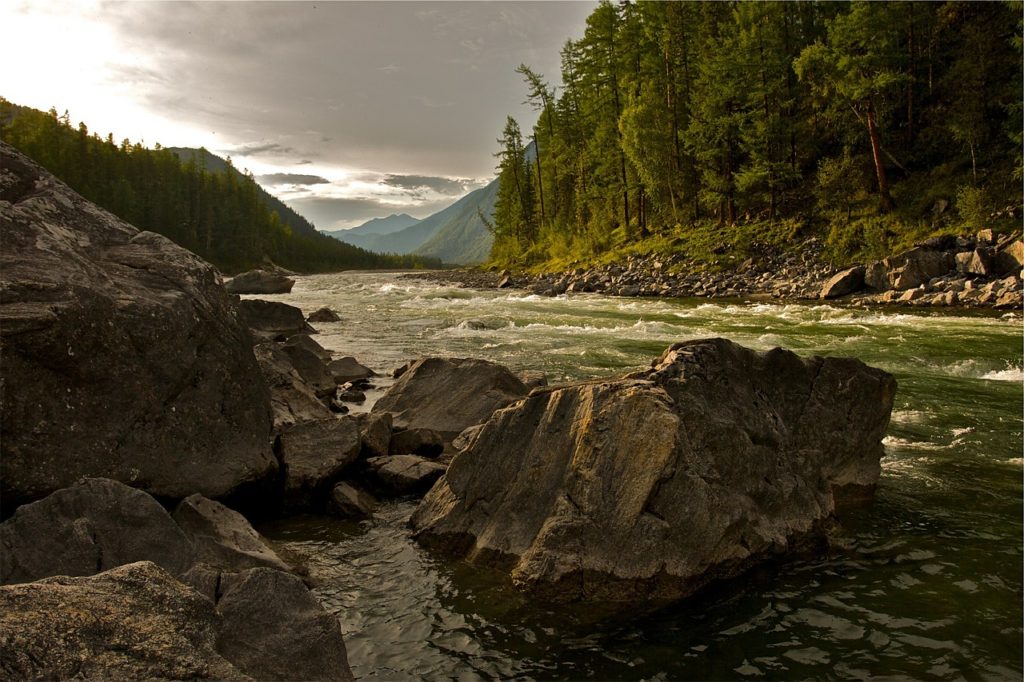The question of crossing creeks and rivers can be a complicated one and usually results in people avoiding them because of the inherent danger. Drowning is a real danger and one of the leading causes of death among backcountry travelers.
It is possible in a survival situation, however, that you’ll have no option but to know how to cross a river or waterway to make your way to safety.
Before we go any further, note: Under no circumstances should you cross an expanse of water that is deeper than the groin level of the shortest member of your party unless your survival depends on it.
With that said, if you have no choice but to cross a water hazard then there are accepted methods and safety procedures that can be applied to do so safely.
Here’s how to cross a river without getting yourself dead:
How to Cross a River
Before proceeding, conduct a mental appreciation to review the situation and confirm there are no alternatives and the crossing is unavoidable. Knowing how to cross a river means having a clear understanding of what is required by listing the factors that will help or hinder you. Consider the courses open to you and select the best course.
Considerations
If you decide you must cross then there are several points to consider, including:
- The shape of the water hazard to be crossed.
- The composition of the ground underfoot.
- Speed of flow of the water.
- Turbulence of the water.
- Depth of water.
- Temperature of the water.
- Proposed entry and exit points.
- Capabilities of members of your group.
Acceptable Places to Cross
Knowing how to cross a river also means knowing where to cross. There are two places where you should be safe during a crossing including shallow water (approximately thigh deep) over a gravel bed with accessible banks or a deep, slow flowing river that is not too wide.
Unacceptable Places to Cross
High and discoloured water with excessive flow, volume and river width.

Best Methods of Crossing a River
Without Aid
It’s important to know how to cross a river unassisted (i.e. without poles or guidelines). This method should only be used when the water is below knee-deep.
The crossing should be in a diagonal downstream direction with the body parallel to the water flow. It is easier to maintain stability by ensuring one leg is upstream and one downstream. There is a danger that the rushing flow of water may cause your legs to buckle if you are facing downstream.
Single Pole Crossing
Used when the water is between the knee and groin in depth and the bottom is smooth with no obvious obstacles. The line of crossing should again be diagonal and downstream — the body should remain parallel with the water flow.
The pole (ideally about 6 feet long x 2 inches in diameter) must be positioned on the upstream side. You should use the pole as a prop and you should lean in to it and walk in an arc until you have to stop and re-position the pole.
Group Pole Crossing
Used when the water is above groin height. This method provides mutual support and is suited to groups of 3 to 6 people.
The crossing should again be diagonal and downstream in direction. The group should be parallel to the flow of water with the strongest person on the upstream end and the next strongest on the downstream end. The pole should be grasped with the upstream arm over and the downstream arm under.
If conditions are too difficult then retreat by walking backwards. Do not try to turn around.
Swimming Method
Used where the crossing is deep, the river is clear of debris and the current is not a problem.
Waterproof your pack and use it as a flotation aid by holding it in front of you with one hand and using your other hand and legs to propel yourself forward.
Key Points to Remember
In any water crossing, always remember:
- Move side on to the current, take small steps and keep your eyes on the far bank.
- Move diagonally across the river to lessen the effect of the current.
- Never fight against the current or hold onto submerged logs or rocks.
- Keep your boots on and avoid loose baggy clothing.
- Wear thermal clothing next to the skin in cold conditions.
- Waterproof your pack, loosen the shoulder straps and unfasten the waistband.
How to Safely Cross a River [Video]
Also, check out Extreme Wilderness Survival: Essential Knowledge to Survive Any Outdoor Situation Short-Term or Long-Term, With or Without Gear and Alone or With Others to learn more.